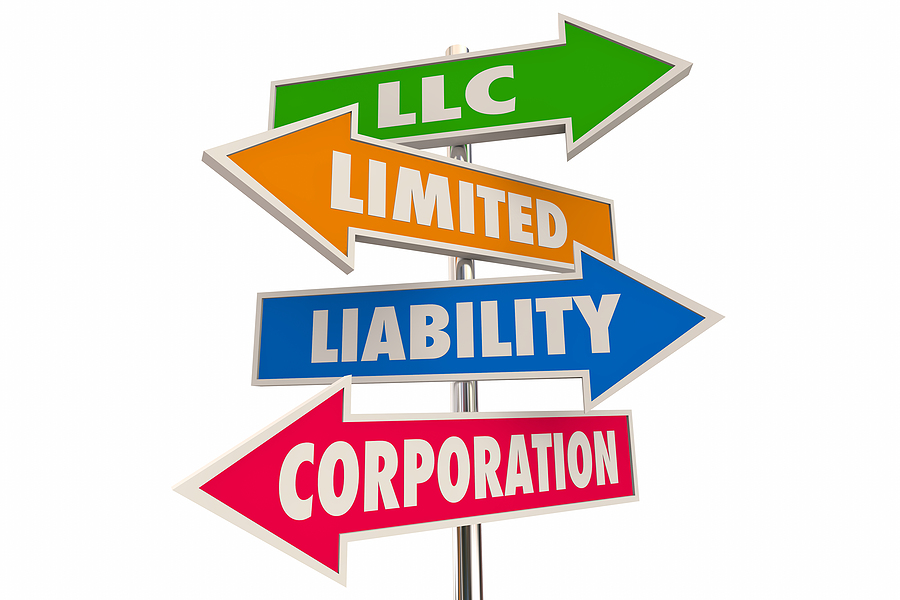When it comes to knowing the differences between tax and legal businesses, most new business owners are perplexed.
The IRS views your company as a tax entity. As a result, this determines how your company will be taxed. S Corporations, C Corporations, and sole proprietorships are examples of tax entities. Legal entities have the option of identifying as which tax entity they choose to be. Although they are still two separate legal entities, both an LLC and a corporation can decide to be taxed as a S Corporation by filing a S Corp election.
Both Entities Have “Limited Liability”
A sole proprietorship or majority shareholders of a partnership are not exempted from the business’s judgments and obligations, as well as their business partners’ actions.
On the other hand, stockholders in corporations and members who own units in limited liability companies (LLC) gain from limited liability. In short, their liability is limited to the amount they invested in the Corporation’s shares or the LLC’s units.
What are the Benefits of Using an LLC? – LLC Tax Advantages
The most tax flexibility is provided by an LLC. The operating agreement of LLC are management and buy-sell provisions, and these make it a popular company for foreign people to be the owner of boats, real estate, and airplanes, as well as to offer services or sell goods.
A one-member LLC is taxed like a private company at first. All assets and liabilities “flow through,” must be recorded on Schedule C of the member’s individual tax return.
A multi-member LLC is taxed as a partnership initially, which requires an EIN application on Form SS-4. Every year, a 1065 Partnership Return form must be completed, together with a K-1 form for every member, detailing the revenue and losses that must be recorded.
The biggest drawback for LLC owners who are taxed as either a sole proprietorship or partnership is that any taxable income that goes through to the owners is considered “earned income” and liable to taxes of employment. As a result, the 15% Social Security-Medicare rate is applicable to the first $128,000 of income earned in 2018, while the 2.9 percent Medicare rate is applicable to all income generated over $128,000.
To overcome this drawback, a Limited Liability Company can make a Subchapter “S” Election by obtaining an Employer Identification Number on Form SS-4 and completing a Form 2553 within two and a half month of its establishment or the start of a tax year.
Please note that this election is only open to the citizens of the United States and permanent residents. The LLC’s taxable income is subsequently reported as passive income by the members, instead of earned income subject to the contributions of Social Security and Medicare, after reasonable remuneration and other business expenditures are deducted. The Limited Liability Company would have to submit a 1120S Corporation Income Tax Return Form every year after making the “S” choice.
By applying for an Employer Identification Number and then filing a Form 8832 within 2 and a half months of the date of creation or the start of a tax year, a Limited Liability Company can opt to be taxed as a Corporation.
The taxable income of an LLC adopting Corporation tax form is taxed at the Corporation tax rates on a 1120 Corporation Tax Return Form that must be filed per year after removing reasonable remuneration and other business expenditures. The Corporation has announced a shift that is unchangeable to a flat tax rate of 21% on all taxable income for tax years starting after 31st of December 2017. Corporation
Why do you want to work for a corporation? Explanation of Corporation Taxes and Legal Issues
A majority of a corporation’s stockholders control it. Every year, a corporation must apply for an Employer Identification Number and submit a US Corporation Income Tax Return form.
“C” Corporation
For tax purposes, a corporation begins as a “C” corporation. This implies that the Corporation must pay taxes on its taxable revenue (after deducting payroll, business expenditures, and depreciation on equipment and furniture). Only income “effectively associated with the U.S” would be subjected to taxation. The Corporation’s taxable income is subsequently subject to a flat 21 percent corporate tax rate, regardless of its activity. Personal service corporations’ taxable income was previously charged at the maximum personal tax rate.
S-Corporation (subchapter “S”)
Within 2 and a half months of the date of establishment or the beginning of the year, a corporation owned by more than one citizens of the United States or permanent residents may submit a Subchapter “S” Election with a 2553 Internal Revenue Form . The “S” Election causes the Corporation’s taxable income to be passed through to stockholders of the Corporation, who will be taxed in proportion to their stock holdings.
The benefit of the “S” Election for personal service corporations is that earnings issued as “S” Corporation dividends are classified as passive income and thus are not liable to employment taxes.
Social Security Tax of 12 percent and Medicare Tax of 2.9 percent would not be paid on the dividends of “S” Corporation once fair wages are paid for the personal services.
The drawback of the “S” Election is that deductions for disability insurance, automobiles, health insurance, and reimbursements for drug, healthcare, and dental plans would be taxable to the “S” Corporation investors.
In Conclusion
Both organizations and limited liability firms remove the proprietors from the business and give limited liability protection for their holdings, with each giving its own set of advantages.
A limited liability company is not the same as a corporation. An LLC is a one-of-a-kind hybrid structure that combines the ease of a sole proprietorship with protections of the liability provided by becoming a corporation.
Finally, determining which entity best corresponds with your objectives is a critical first step in organizing your company.
In terms of legal safeguards, both limited liability companies and corporations benefit their owners.

